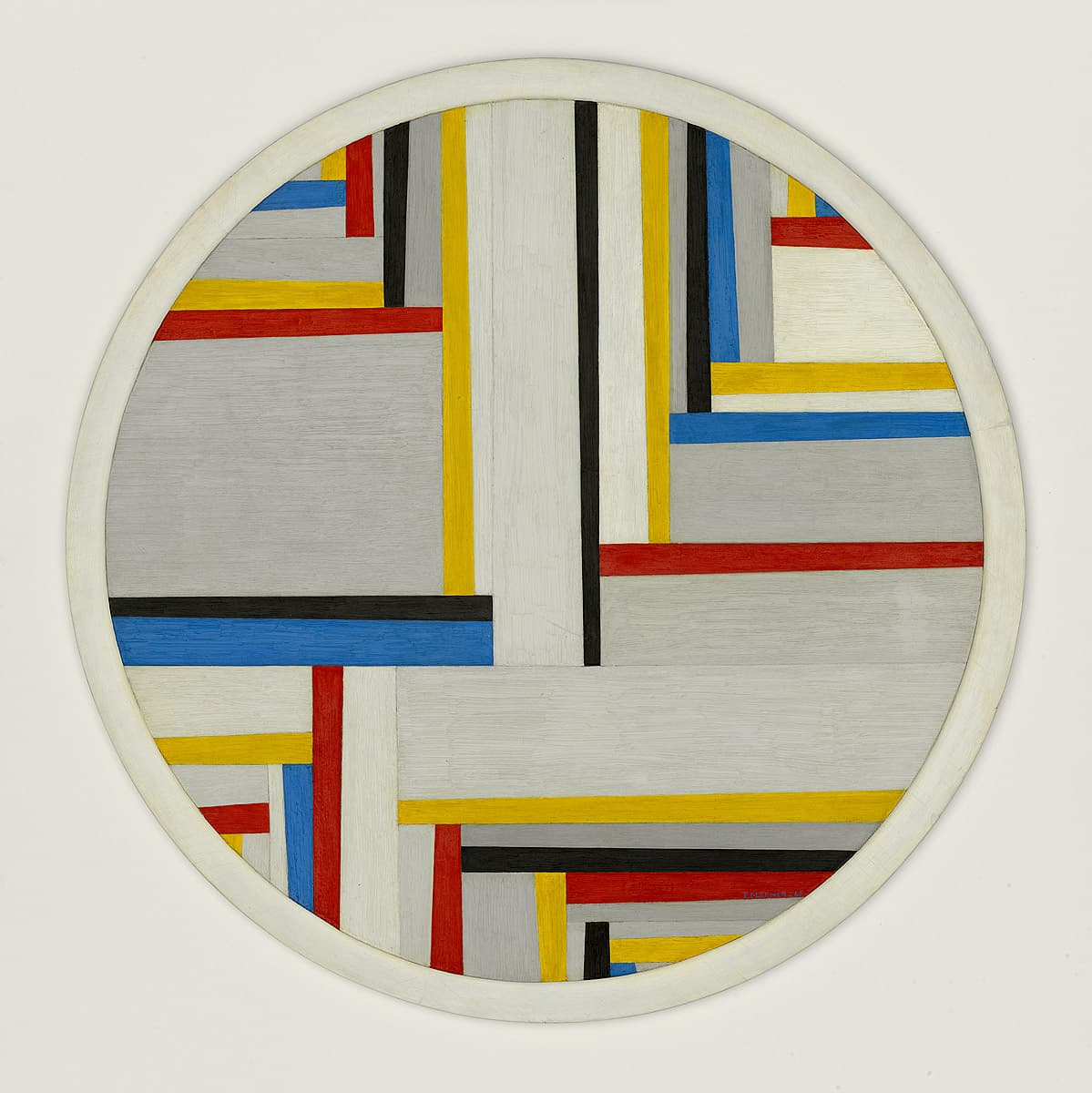

Fritz Glarner
Learn moreRelational painting, tondo no. 4 1946
© 2002 Kunsthaus Zurich. All rights reserved. Purchased 1977
More detail | PermalinkFritz Glarner painted his first tondo in the early 1940s and it became his basic format for over 60 variations painted in the United States. Having studied and worked in both Italy and France, exhibited with the Abstraction-Création group in the 1930s and been influenced by the De Stijl painters and Bauhaus principles, Glarner’s work brings together a range of geometric and spatial principles. His use of the round format for his paintings recalls Renaissance models but here reinvented with an emphatically modern approach. As the artist later explained, the tondo ‘was naturalistic because it could be a sun, a moon, or any symbol because it was concentric and therefore the space around it was undetermined’.[1]
In New York Glarner was closely associated with Piet Mondrian and, while he acknowledged the older artist’s influence, he also made key adjustments. Both artists rely on primary colours but Glarner makes greater use of greys and diagonal forms. As Michael Lloyd and Michael Desmond point out, Glarner replaced the ‘balancing of horizontality and verticality achieved in Mondrian’s painting with interlocking rectangles and wedges that expand outwards towards the edges of the canvas’.[2] In Tondo no. 1 and Tondo no. 2 (both 1945) Glarner combines:
abstract realities and the laws of mathematics and geometry within the canvas: the organization of the image, the relationships between the areas, the intensity of the base colours and grey tones are coordinated [to create] a unity that is independent of the world yet internally functional.[3]
In Tondo no. 3 1945 Glarner sought to overcome this figurative ambiguity by dividing the interior of the tondo into a series of angles, successively reiterated towards the edge of the canvas and, by implication, shaping the space beyond the circumference.[4] These ideas were refined in Relational painting, tondo no. 4, painted the following year. While its colours and overall geometry of make it appear flat, the lattice-like sections imply a layering which, again, suggests recession. Moreover, the use of board—instead of the more traditional canvas—gives the work an object-like form.
Towards the end of 1946, the artist settled on the term ‘relational painting’ as an English equivalent for peinture relative, and subsequently applied the term to earlier paintings, as well as his new work. This term suited, as Lloyd and Desmond observe, ‘the kind of abstract painting he pursued, focused on relating geometric shapes and ground through colour, in ways which would make shape and ground alternate to produce what he called “pumping planes”’.[5] ‘In painting’, Glarner said, ‘form has to lose its specific identity and space has to acquire one by determination.’[6]
Lucina Ward
[1] Dore Ashton, ‘Fritz Glarner’, Art International, vol 7, no 1, January 1963, pp 48–55.
[2] Michael Lloyd and Michael Desmond, European and American Paintings and Sculptures 1870–1970 in the Australian National Gallery, Australian National Gallery, Canberra, 1992, p 246.
[3] Tondo no. 1 1945, Kunsthaus, Zurich, at https://www.google.com/culturalinstitute/beta/asset/relational-painting-tondo-no-1/CAEKErPhRQvmjQ, accessed 16 February 2018. Tondo no. 2 1945, whereabouts unknown.
[4] Tondo no. 3 1945, Collection Lucie Glarner, Locarno.
[5] Lloyd and Desmond, p 246.
[6] ‘What abstract art means to me’, Glarner’s response to a symposium held at the Museum of Modern Art, New York, 5 February 1951, reprinted in the Bulletin of the Museum of Modern Art, vol 18, no 3, Spring 1951, pp 10–11, see also http://www.jstor.org/stable/4058250, accessed 16 February 2018.

